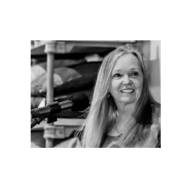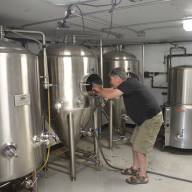Three Harwood Union students, plus this correspondent were among those who helped celebrate 10 years of Vermont’s Flexible Pathways Initiative at the Vermont State House on December 7.
Ten years ago, Vermont implemented the Flexible Pathways Initiative, also known as Act 77. This allowed for more nontraditional ways of learning. In the past 10 years, Act 77 has expanded dual enrollment and early college programs, increased access to work-based learning programs, created more virtual learning opportunities, implemented Personalized Learning Plans (PLPs), and offered more career and technology programs. Last week, the State House hosted a 10-year celebration and Harwood was invited to be present.
The highlight of the celebration was the Bright Spots, where schools and programs each gave a short presentation highlighting their Flexible Learning Pathway with student testimony. Harwood’s Mae Murphy, James Westhelle, and Addison Thomas all spoke. Murphy spoke about Extended Studies, a program that allows students to deepen their learning outside of class, and about her internship as the Wellness Center coordinator. The Wellness Center is a place where students can go to relax and destress, run by Jen Dreimiller (although students like Murphy are currently being trained to run the Wellness Center).
Westhelle spoke about Harwood Community Learning Center, often abbreviated as HCLC. HCLC is a holistic learning center that prioritizes transferable skills, personalized and one-on-one learning, and post-secondary readiness. He spoke about some of his projects, which included a palm reading project, an exploration of Middle Eastern cuisine, and a tie-dye business. Thomas spoke about her Aerospace Exploration Independent Study. Independent Studies are personalized projects designed with a qualified teacher. Thomas’s Independent Study focuses on physics and how it’s involved in flight.
Some other presenters were Twinfield’s Renaissance program, which involves student-designed projects with a mentor, similar to Harwood’s Independent Studies; Vermont Virtual Learning Cooperative; the Burlington City and Lake Semester, which is a community-focused, outdoorsy collaboration between the Burlington school district and Shelburne Farms; Central Vermont Career Center, which is a career and technical education center; Moosalamoo Center, which is an outdoor survival program; Habitat for Aviation, which is an all-female group building a plane and raising awareness about women in the trades; and the Bellows Falls Academy, which prioritizes proficiency-based learning and Personalized Learning Plans.
Jess deCarolis, the division director of student pathways at the Agency of Education, has been working with personalized, proficiency-based learning since 2016. A former 504 coordinator, she cited a 2011 study of high school completion rates as the kickstart of Act 77 and its premise. The study showed that partnerships with high schools model developing strong relationships (usually with a mentor) with students’ learning plans.
Act 77 implemented Personalized Learning Plans, or PLPs, are an avenue to show how students individually learn, present their interests, and show what makes them comfortable. She likened it to a social media account: anyone with a social media account has direct access over what they post, how their account looks, who they follow, and who follows them. PLPs differ from 504 plans and IEPs in that they are the consistent voice of the student. IEPs aren’t a plan for students, they’re a plan for adults on how to accommodate that specific student. PLPs are less of an accommodation and more of an action plan.
When asked about the history and growth of Act 77, deCarolis said, “We’ve seen growth in how people think about student learning in a way in which the environment is more likely now to try to adapt to support the student, whereas previously, if the learner didn’t fit well, it was game over for them. Before we suggest that a student is disengaged or a student doesn’t want to learn, let’s have a conversation. Is it possible that the demands of the environment are not matching with the needs of the student?”
The ideal environment, she said, is in the eye of the beholder. “The goal isn’t to make a complete switch to all classrooms being Flexible Pathways. For some students, a traditional environment is better, and we need to hold space for all of that.” The end goal with Act 77 is to have all tools at our disposal in order to help the needs of every student.”













